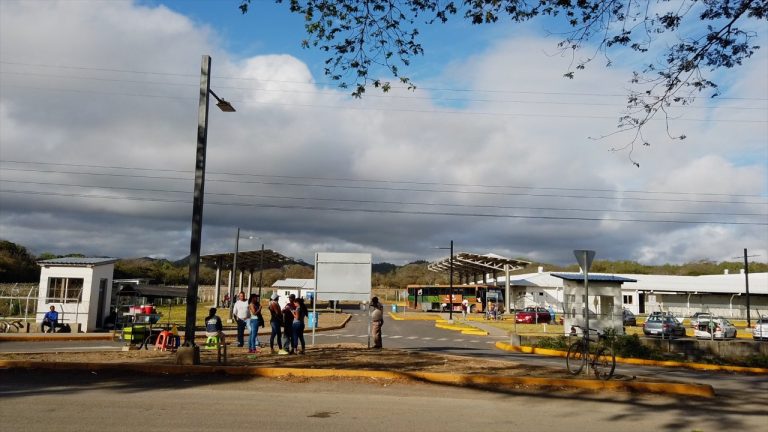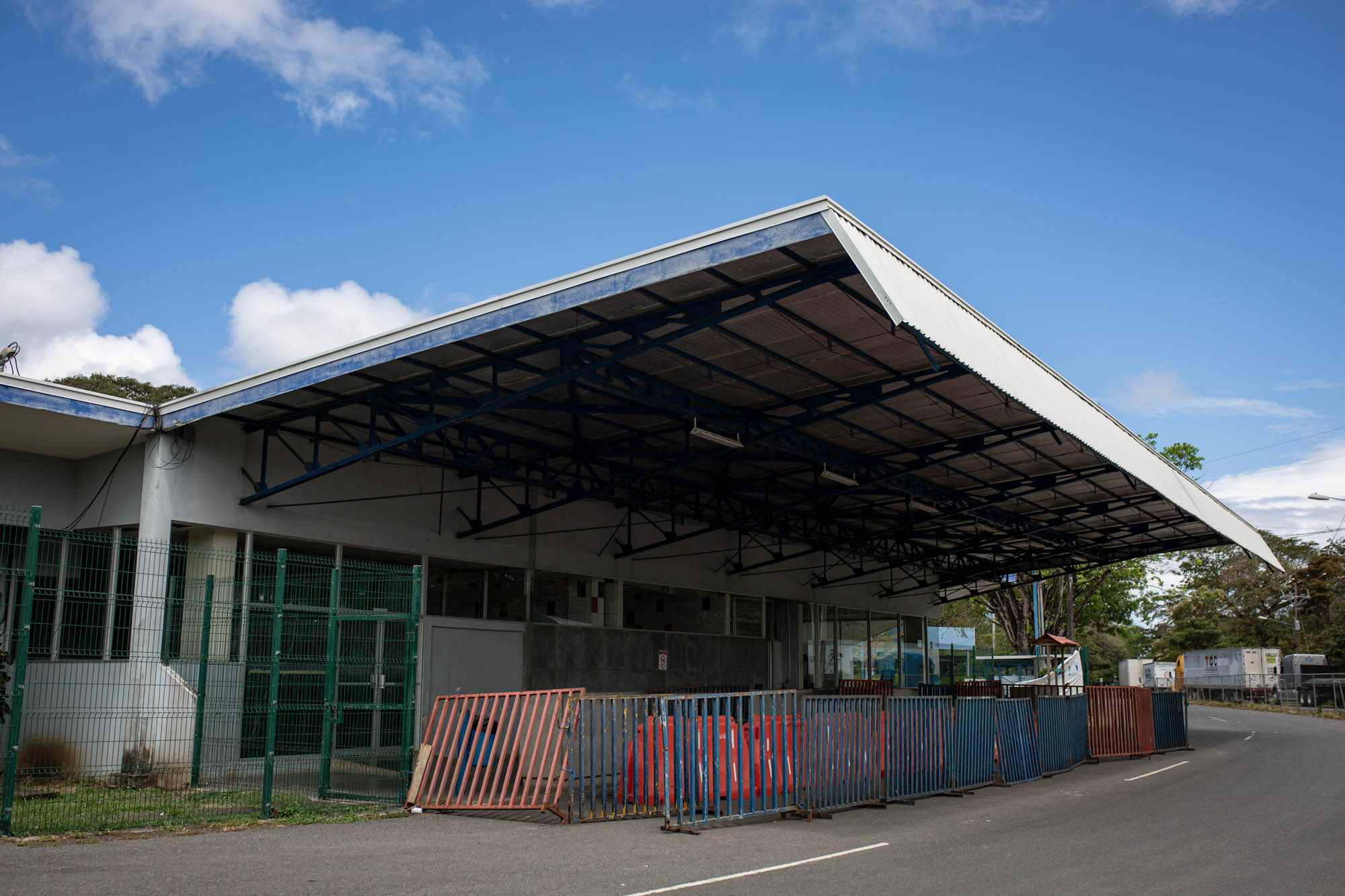25 de marzo 2021

Nicaragua: Public Employees Hindered from Traveling to USA

PUBLICIDAD 1M
PUBLICIDAD 4D
PUBLICIDAD 5D
Tourists coming from Nicaragua will be able to enter Costa Rican territory through the Peñas Blancas border station. Here are the entry requirements

Tourists coming from Nicaragua will be able to enter Costa Rican territory through the Peñas Blancas border station. Here are the entry requirements
Following one year and sixteen days of closure due to the pandemic, Costa Rica is opening their land borders. Beginning April 5th, foreigners can enter the country over land from Nicaragua to the north, or from Panama, to the south.
The Costa Rican authorities closed all borders on March 19, 2020 to contain the spread of COVID-19. Beginning in August that year, they began a slow reopening of their air and sea borders. However, the land borders remained closed to foreigners.
The closure principally affected migrants coming from Nicaragua, given the two countries’ strong historic social and economic ties. Before the pandemic, an average of 3,000 people a day passed through the Peñas Blancas border station alone. Today, with entry restricted to Costa Rican citizens or legal residents, barely 700 people come through each day.
Entering tourists must still meet the entry requirements established by the Costa Rican Immigration and Foreign Affairs Bureau. These include a visa for citizens of certain countries [including Nicaraguans]. Visitors must fill out an online epidemiological form known as a Health Pass, and show proof of current health insurance. These requirements were confirmed by Costa Rican Tourism Minister Gustavo Segura during a press conference held on March 23nd. The same requirements are in place for air and sea borders.
The new requirements for entering Costa Rica are aimed at preventing the spread of COVID-19. They include an online health pass, that must be completed 48 hours before travel.

The Peñas Blancas border station between Nicaragua and Costa Rica remains nearly deserted. That could change on April 5th. Photo: Cesar Arroyo /La Voz del Guanacaste.
Travelers no longer need to present a negative COVID-19 test. That requirement was dropped last October 26th. However, travelers will need to present proof of current health insurance.
Tourists should have sufficient health coverage to cover the cost of lodging and medical treatment in case they develop COVID-19. For those who don’t have such coverage, Costa Rica offers local insurance policies. The price varies according to the number of days of the planned stay.
Costa Rican residents must be up to date with their contributions to the country’s Social Security system. If not, they, too, must purchase a temporary local policy valid for 22 days. They will also receive a notice to catch up with their payments to Social Security.
A number of insurance companies are accredited by the Costa Rican Tourist Institute to sell temporary policies. They include the Costa Rican National Insurance Institute (INS), the national branch of BlueCross BlueShield, and the Sagicor company. The cost of medical insurance ranges from US $11 dollars a day, on up.
There’s a slight change for Costa Rican citizens and residents that were previously authorized to enter through the land border. The order for a forced 15-day quarantine after entering has been rescinded, Gustavo Segura informed.
The Tourism Minister explained that the decision to open the land borders was based on the need to reactivate tourism.
“Many of the European tourists that visit us are tourists that come from far away. As such, they’re interested in combining destinations in several countries. On our northern border, there are binational corridors like Costa Rica’s La Cruz and Nicaragua’s port of San Juan del Sur. Similarly, tourists visit El Chiles in Costa Rica, and then Lake Cocibolca in Nicaragua.” Segura added that he’s aware of European tourists in Nicaragua and Panama who want to enter Costa Rica.
Costa Rica is strongly dependent on tourism. That industry contributes approximately 8.2% to the country’s GNP, considering both direct and indirect contributions.
The flow of tourists between the Central American countries hasn’t been the only thing affected by the border closure. On March 21st, Confidencial joined two Costa Rican media outlets – La Voz de Guanacaste and Interferencia – in producing a special report. La Frontera Cerrada [“The Closed Border”]. It documents the social and economic effects of the closed Peñas Blancas border. The year-long interruption of normal traffic between the two countries left hundreds of workers unemployed. Both the formal and the informal sectors were hit hard. The closure affected small businesses and large companies, as well as the economies of border towns on both sides.
Local functionaries and residents interviewed for the report all stated that closing the border didn’t halt the flow of migrants. Instead, it diverted traffic to the many unmarked border-crossing points, and thus increased the entry of illegal migrants.
From the moment the first Coronavirus case was registered in Costa Rica, the government adopted strict containment measures. On March 16, 2020, they declared a national emergency. All borders were closed, in-person school was suspended, and the public sector was ordered to work from home. Special rules for vehicle travel were established.
As the daily case rate diminished, these measures have been loosened, little by little. From the beginning of the pandemic until now, Costa Rica has reported more than 200,000 cases of COVID-19. They’ve registered 2,908 deaths from the disease. The country began vaccinating its population on December 24, 2020, and as of this article, they’ve vaccinated over 100,000 people. The Costa Rican Health Ministry has prioritized health workers, the elderly and those at high risk of complications.
Nicaragua, in contrast, neither closed their borders nor declared a state of emergency. They didn’t establish any restrictions on travel. Instead, they promoted normal social activities, including massive crowd events.
The real impact of the pandemic in Nicaragua remains unknown. The Health Ministry has presented very limited information, and local and international organizations strongly question the few statistics they’ve offered. For example, the Nicaraguan Ministry of Health only recognizes 176 deaths from COVID-19, and 6,602 positive cases. Independent analyses of excess mortality in the country in 2020 yielded a very different figure: 9,000 more deaths than normal. These unusual deaths are most likely linked to COVID-19
Beginning July 14, 2020, the Nicaraguan government began demanding a negative PCR test for COVID-19 as an entry requirement. This requirement is in effect for all land, sea and air borders. This means is that those wanting to travel from Costa Rica to Nicaragua via Peñas Blancas must have a recent test. They’ll be asked to show proof of a negative PCR COVID-19 test taken within the last 72 hours.
Archivado como:
PUBLICIDAD 3M
Periodista nicaragüense desde 2007, con experiencia en prensa escrita, televisión y medios digitales. Tiene una especialización en producción audiovisual y una maestría en Medios de Comunicación, Estudios de Paz y Conflicto de la Universidad para la Paz de las Naciones Unidas. Fundadora y editora de Nicas Migrantes, proyecto por el cual ganó el Impact Award 2022 del Departamento de Estado de EE. UU. Ha realizado coberturas in situ en Los Ángeles (Estados Unidos), México, El Salvador, Guatemala, Nicaragua y Costa Rica. También ha colaborado con France 24, The Guardian, Al Jazeera, BBC World Service. Ha sido finalista y ganadora de varios premios nacionales e internacionales, entre ellos el Premio Latinoamericano de Periodismo de Investigación Javier Valdez, del Instituto Prensa y Sociedad (IPYS), 2022.
PUBLICIDAD 3D